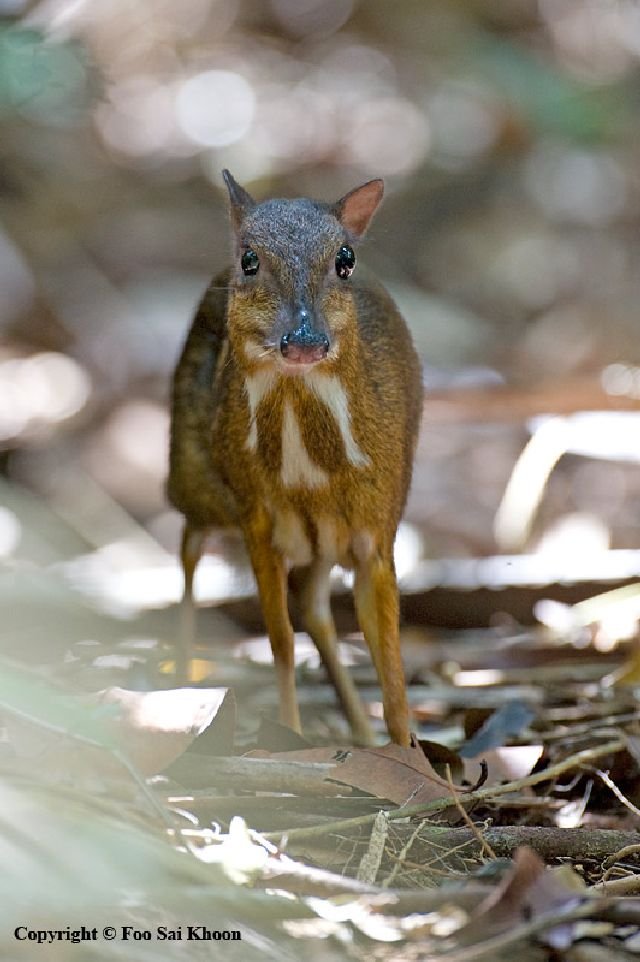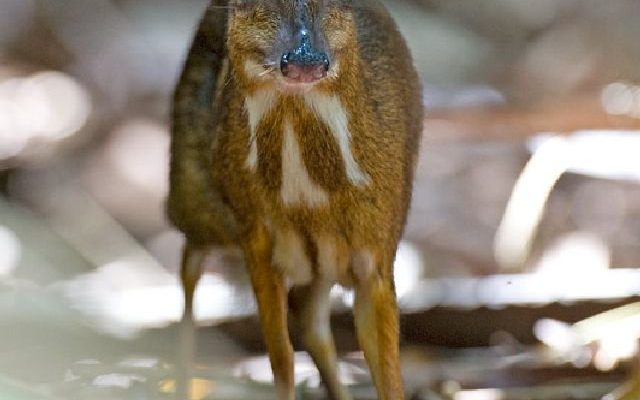
You might think of them as the underdogs of the deer world. Imagine a high-schooler who’s super smart but always hangs out in the background—mouse deer are kind of like that. They blend into their surroundings, making them harder to spot. Plus, their cleverness helps them survive in their jungle homes. So, how smart are they really? Let’s explore their abilities, behaviors, and what makes them unique.
Understanding the Mouse Deer
Mouse deer, belonging to the family Tragulidae, are small, shy animals found mainly in Southeast Asia. They typically weigh between 10 to 25 pounds and stand just a foot tall at the shoulder. Unlike their larger deer relatives, mouse deer have a spindly appearance and lanky legs. Their fur is usually a mix of brown and gray, allowing them to blend in seamlessly with the forest floor.
Here’s the thing—mouse deer are not just cute and small. They play a crucial role in their ecosystem. As herbivores, they help control the growth of plants and serve as a food source for their predators. However, their small size keeps them on their toes. You might be wondering how they manage to thrive despite their vulnerability.
Cognitive Abilities of Mouse Deer
When we talk about the intelligence of animals, it’s important to consider how they adapt to their environment. Mouse deer have developed some clever strategies for survival. Their main cognitive strength lies in their spatial awareness. They can navigate through thick underbrush and tricky terrains like pros, relying primarily on their excellent senses.
Just like a skilled video game player who knows the map by heart, these deer can remember where food sources are located. Studies show that they can even recognize familiar scents and associate them with safety or danger. This ability is key for survival since it helps them avoid predators while knowing where to find the best snacks.
Another fascinating aspect is their social behavior. While mouse deer are generally solitary, they do communicate with each other through vocalizations and scent markings. Think of it like leaving a note for a friend—these markings tell others, “Hey, this is my territory,” or “Food is over here!” This clever communication adds another layer to their cognitive abilities.
Behavioral Traits of Mouse Deer
Mouse deer are creatures of habit. They tend to be crepuscular, meaning they are most active during dawn and dusk. This behavior minimizes their chances of running into predators that are less active during these hours. Picture yourself sneaking out under the cover of darkness; that’s their strategy!
Their feeding habits are quite intriguing as well. Mouse deer primarily eat leaves, fruits, and shoots. They use their sharp incisor teeth to strip leaves from branches, showing a level of resourcefulness. By sticking to a diet rich in foliage, they ensure they have ample food while conserving energy by avoiding mid-day heat.
Adaptation is another key behavior for mouse deer. They often freeze when they sense danger, relying on their camouflaged coats to blend in with their surroundings. This is similar to playing hide-and-seek; they know that staying still can often keep them safe while a threat passes by.
Reproductive Behavior and Parenting
When it comes to reproduction, mouse deer have their own unique ways. They typically mate during the rainy season, which ensures that their young have plenty of food to grow. After a gestation period of about 7 months, a doe usually gives birth to a single fawn. That’s like having a surprise guest showing up just when you thought it was all quiet.
Mother mouse deer are very nurturing. They care for their fawns by hiding them in dense vegetation, teaching them to stay silent and still until they’re old enough to follow. It’s a bit like a parent teaching their child to play stealth mode in a game. The fawn learns to be cautious and observant, which is vital for its survival.
Also, here’s an interesting fact: fawns can walk shortly after birth. This quick mobility helps them evade predators. However, they rely heavily on their mothers for safety and food during their early weeks, making the bond between them quite strong.
Threats and Conservation Status
Despite their clever survival strategies, mouse deer face several threats. Habitat destruction due to deforestation and human encroachment poses significant risks. Many mouse deer live in areas that are becoming increasingly fragmented, which can lead to isolation and reduced genetic diversity.
Additionally, hunting for bushmeat adds pressure to their populations. Just like how we protect our own neighborhoods, conservation efforts for mouse deer focus on preserving their habitats and implementing anti-poaching laws. Knowing that these little creatures have a role in their ecosystem makes these efforts even more important.
We should also remember that not all mouse deer species are equally affected. While some populations are stable, others are declining at an alarming rate. Organizations are working to study these differences, aiming to devise effective conservation plans that ensure the survival of mouse deer for generations to come.
So, how smart is a mouse deer? Honestly, they’re pretty clever! Their spatial awareness, communication skills, and adaptive behaviors all showcase their intelligence. While they may not have the same brainpower as some larger mammals, their survival skills are impressive in their own right. They remind us that intelligence can take many forms.
Whether it’s their ability to navigate through dense jungles or their clever methods of communication, mouse deer are fascinating creatures deserving of attention. As we learn more about these pint-sized animals, we also gain insight into the broader ecosystems they inhabit. By understanding and appreciating mouse deer, we can contribute to their conservation and ensure these charming little deer continue to thrive in the wild.

